الصور الحاصلة على جائزة أفضل صور الأحياء المائية في العالم لعام 2013

اختارت جامعة ميامي الأمريكية مجموعة من الصور واللقطات، التي فازت بمسابقة أجمل صور الأحياء المائية في العالم لعام 2013، في مسابقة التصوير تحت الماء. وتم اختيار تلك الصور من بين أكثر من 650 صورة التقطت من أكثر من 23 بلداً، بحسب ما نشرته صحيفة “الديلي ميل” البريطانية. وتم اختيار الفائزين من قِبل لجنة من خبراء التصوير في العالم، أبرزهم مصور تحت الماء المحترف نيكول وانج، والمحاضر بجامعة ميامي “مايرون وانج”، والأستاذ بمدرسة علوم الأحياء البحرية والثروة السمكية “جيانجانج لو”.
وحصلت على المركز الأول الصورة التي التقطها المصور البريطاني “أليكس تاترسيل” لكلب البحر في سان دييجو، وسط الشعب المرجانية رائعة الجمال. وحصلت صور تفريخ أسماك الهامور في جوبيتر بولاية فلوريدا الأمريكية، وسمكة القرش ذات الرأس المطرقة على المركز الثاني.
فيما حصلت صورة “أوستن جالاجر” لسمكة القرش البيضاء بالقرب من جزر الباهاما على المركز الثالث؛ نظراً لأن تلك السمكة، واحدة من أكثر الأسماك خطورة في العالم، حيث قتلت ما يصل لـ800 بحار منذ عام 1945 وحتى الآن. كما حصلت صورة حطام السفينة ” ثيستليجورم” التابعة للبحرية البريطانية والتي غرقت منذ عام 1940 بالقرب من رأس محمد في شبه جزيرة سيناء في مصر على المركز الرابع. ورصدت باقي الصور عالماً خفياً رائعاً من الكائنات البحرية الجميلة، والتي قد يكون بعضها خطراً، والآخر نادراً بمختلف الأشكال والأحجام، وفي مختلف الأعماق من البحار إلى المحيطات إلى البحيرات الضحلة.
First place in the “Macro” category of the Underwater Photography Contest, Beth Watson’s photo of an anemone shrimp in the waters off Puerto Galera in the Philippines.

The second place macro picture by Pennsylvania photographer Douglas Good, was this image of an emperor shrimp sat on top of two nudibranch molluscs.
In the third place of “Macro” category, a porcelain crab (Neopetrolisthes maculatus) on an anemone at Pescador Island in the Philippines, by Italy’s Frederica Bambi.

The winner of the first place in the “Fish or Marine Life Portrait” category, a juvenile lionfish by Florida photographer Steven Kovacsis, captured on his camera during a night dive in Roatan, Honduras.

The picture of a male banded jawfish shows off his clutch of eggs at the Blue Heron Bridge in Riviera Beach, by Florida’s Judy Townsend, won third place in the “Fish or Marine Life Portrait” category.

The second place in the “Wide Angle” category, dolphins swiming in a small inlet off Hawaii’s Kona Coast, by New York photographer Joseph Tepper.
This image of a harbor seal was taken in a kelp forest at Cortes bank near San Diego in California by Kyle McBurnie. It was the overall winning image submitted to the Rosenstiel School of Marine and Atmospheric Science's (RSMAS) underwater photography competition in Miami
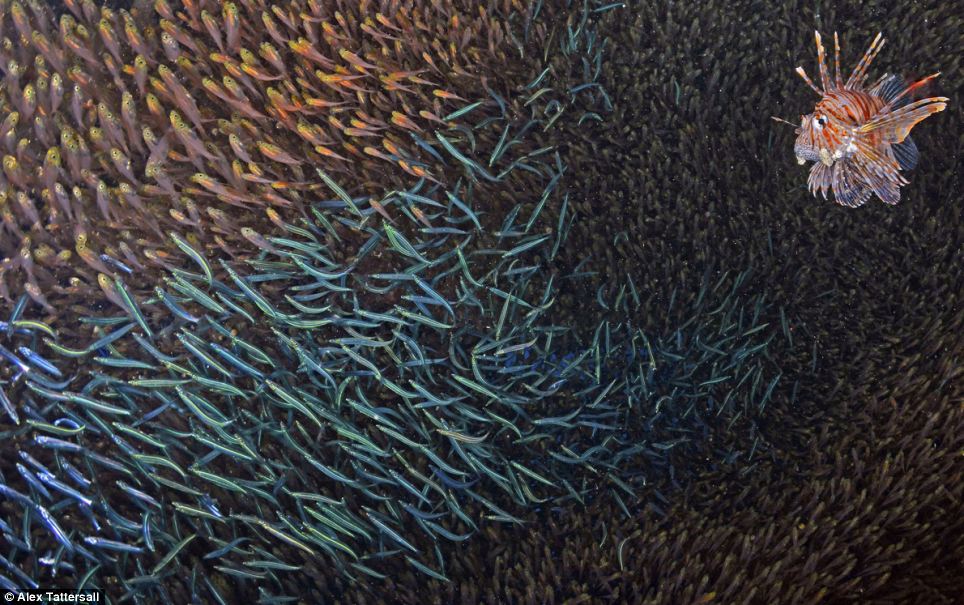
A photographer from Bournemouth took this winning shot of a lionfish on the Thistlegorm wreck in the Red Sea. Alex Tattersall took the shot during a trip to Egypt and it won first place in the wide-angle category. The SS Thistlegorm was a British naval ship built in 1940 in England. She was sunk on 6 October 1941 near Ras Muhammad in the north African country and is now a well known diving site
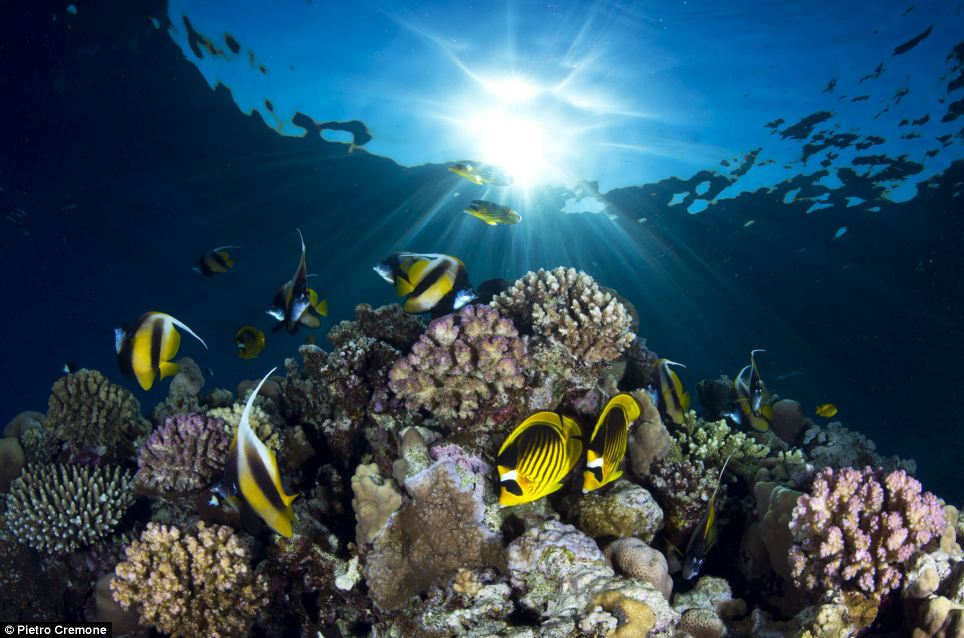
Pietro Cremone from Itlay won third place in the wide-angle category. His entry shows a Raccoon butterfly fish and angelfish on a reef in the Red Sea near Sharm el Sheik in Egypt. Raccoon butterfly fish are also known as crescent-masked butterfly fish because of their patterns. They grow up to eight inches and can live for seven years
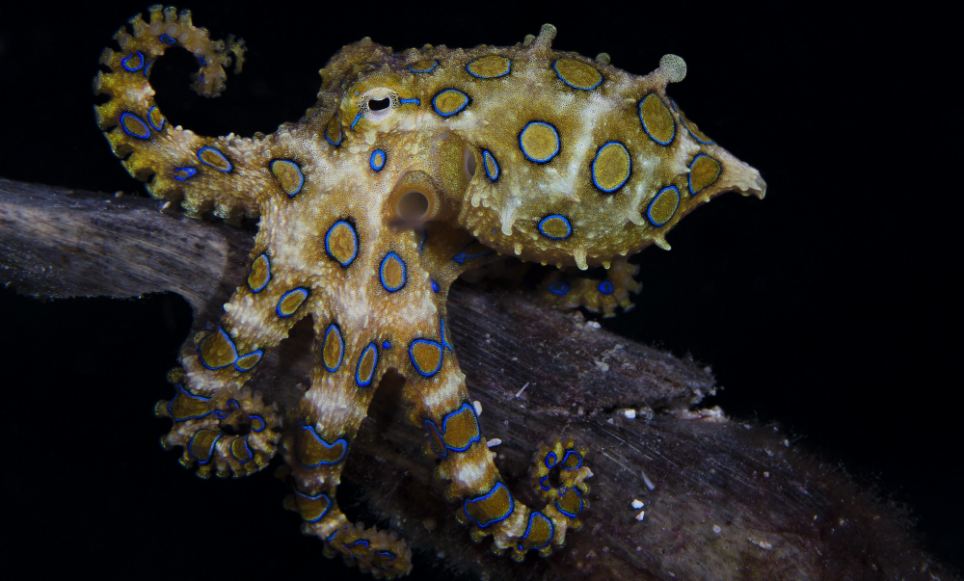
This greater blue-ringed octopus was photographed near Malapascua island in the Philippines. The image won second place in the fish or marine animal portrait category and was taken by Marcello DiFrancesco from Italy. The octopus is one of three species of venomous blue-ringed octopuses that produce venom in its salivary glands. The venom called tetrodotoxin causes paralysis and respiratory arrest and can lead to heart attacks in victims due to a lack of oxygen
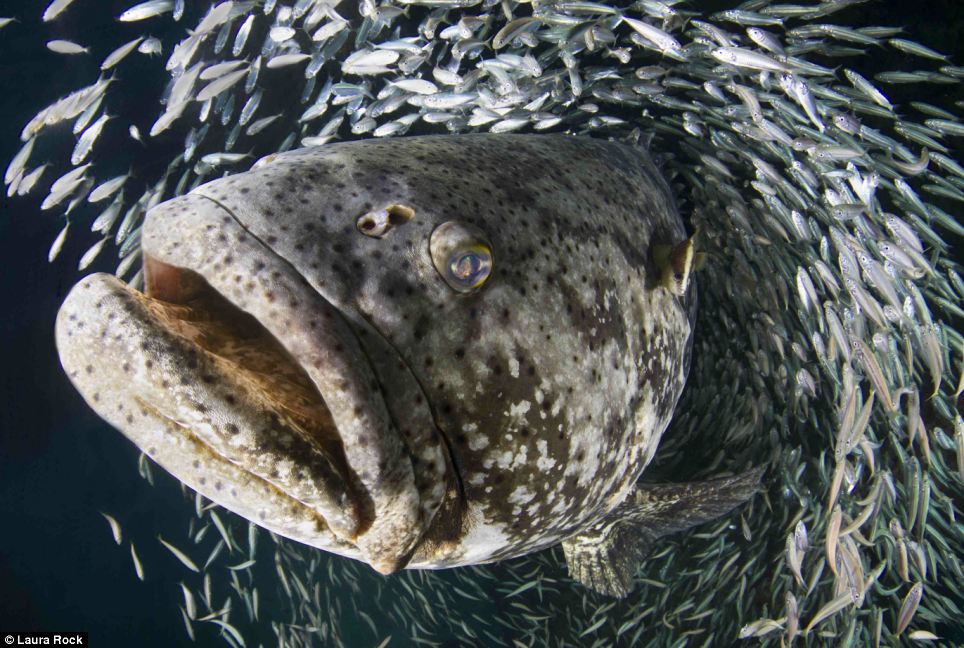
The best student entry in the RSMAS underwater photography competition was won by Laura Rock from Florida. It shows a goliath grouper fish, official name, Epinephelus itajara, during the annual spawning event in Jupiter in Florida. Goliath groupers mainly eat mostly small, slow-moving fish and crustaceans. They can live to their 60s and begin to spawn when they reach about four feet long. They will travel long distances ¿ as much as 180 miles ¿ to reach summer spawning sites
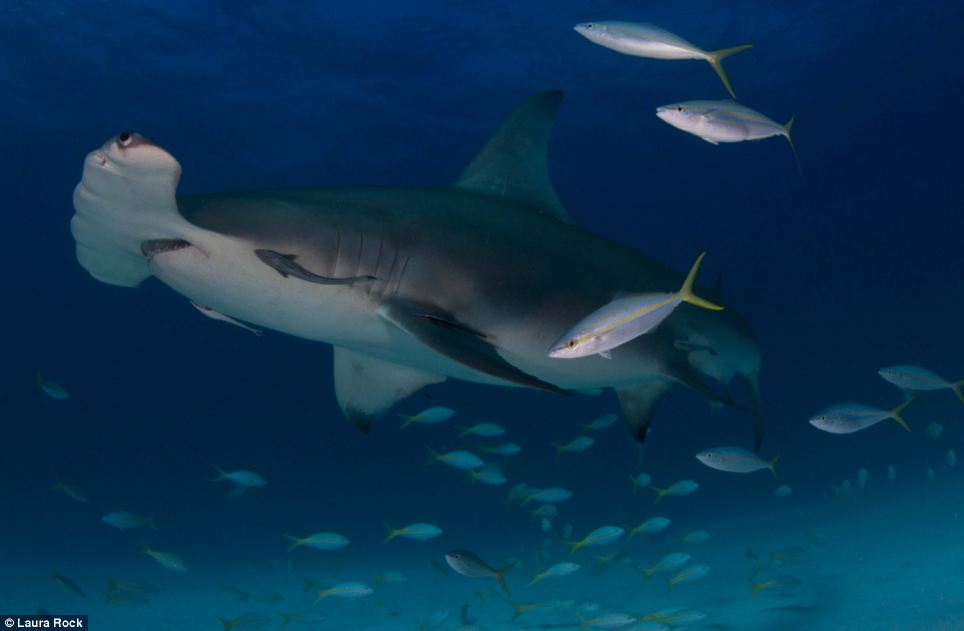
Laura Rock from Florida also won second place in the student category with this shot of a great hammerhead shark in Bimini in Bahamas. The average great hammerhead grows to around 20 feet long. The great hammerhead rarely attacks humans but will defend itself when hunted for large fins. The fins are valuable in Asia as the main ingredient of shark fin soup
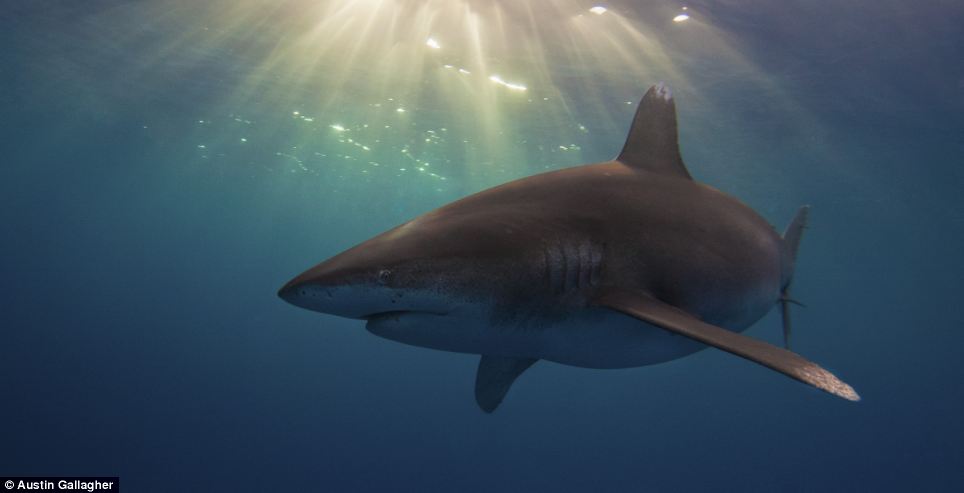
This photo of an oceanic white tip shark was taken by third place student winner Austin Gallagher, from Florida. He took the image near Cat Island in the Bahamas. Renowned oceanographer Jacques Cousteau labelled the white tips as 'the most dangerous of all sharks'. In 1945, after the torpedoing of the USS Indianapolis, whitetips were thought to be responsible for the deaths of up to 800 sailors


